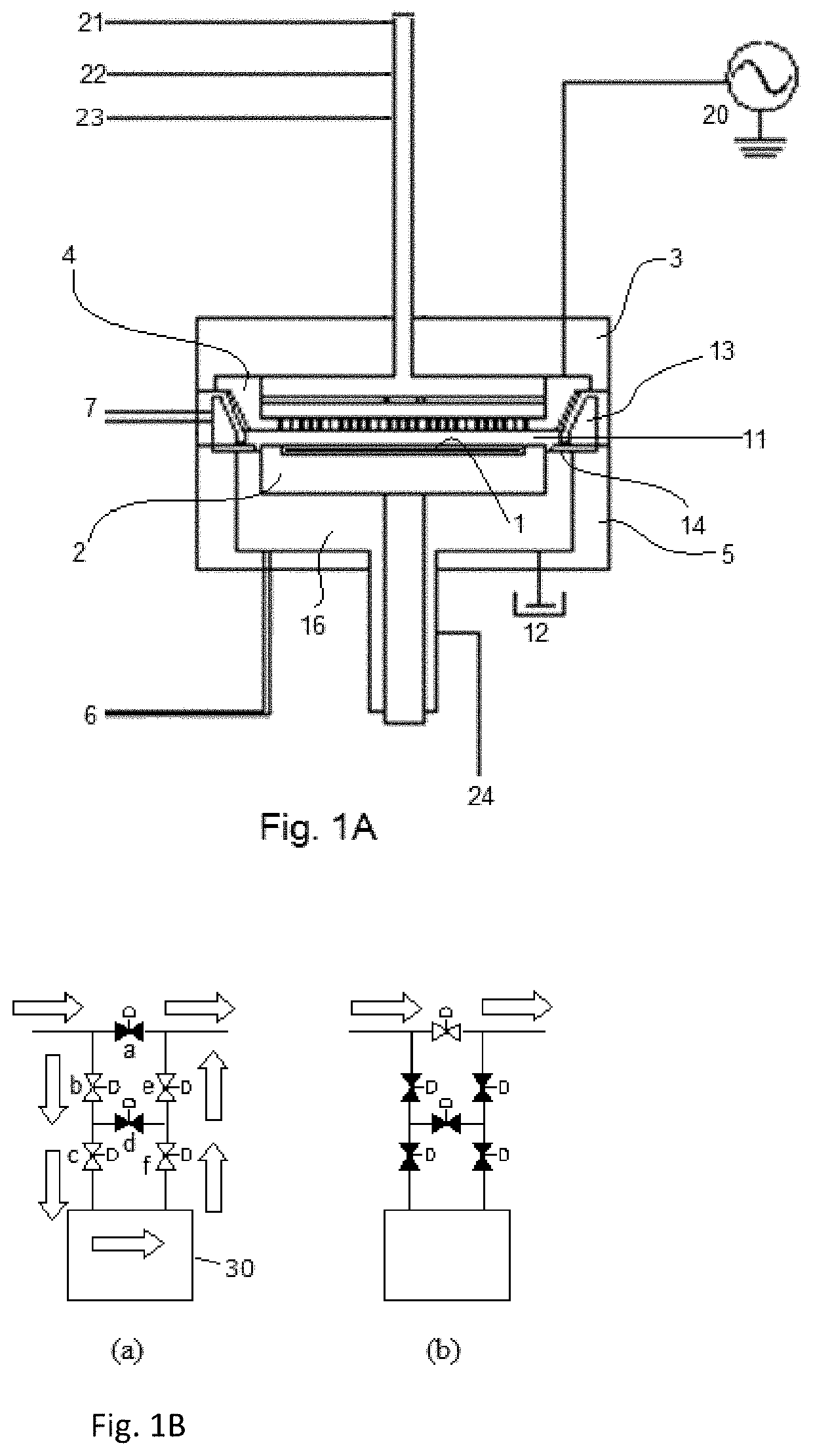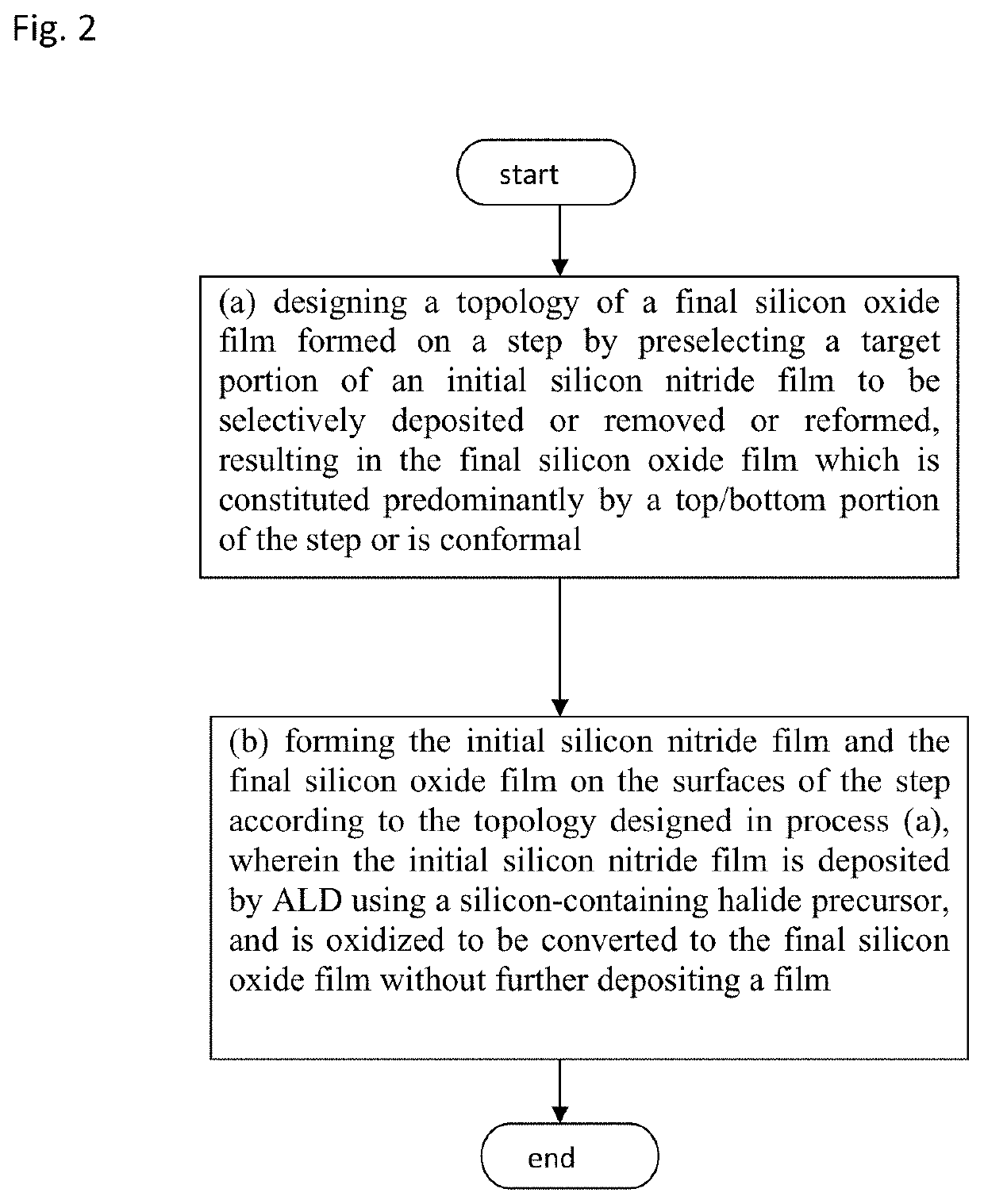Method of topology-selective film formation of silicon oxide
a topology-selective film and silicon oxide technology, applied in the direction of coatings, metallic material coating processes, chemical vapor deposition coatings, etc., can solve the problems of difficult control of the topology of silicon oxide films, degradation of critical dimensions (cd) of trenches, and adverse effects on the underlying film, so as to improve the adsorption property of halogen-containing precursors, improve the surface conditions of substrates, and reduce the degree of adsorption of precursors
- Summary
- Abstract
- Description
- Claims
- Application Information
AI Technical Summary
Benefits of technology
Problems solved by technology
Method used
Image
Examples
example 1
[0104]In this example, the selective reformation of a target portion of a film as illustrated in FIG. 5 was conducted. First, a SiN film having a thickness of 20 nm was formed on a Si substrate (0300 mm) having trenches (having an opening of 30 nm and an aspect ratio of 3) by PEALD, and then, the SiN film was converted to a SiO film according to the process sequence illustrated in FIG. 7 under the common conditions shown in Table 3 and the specific conditions shown in Table 4 below using the PEALD apparatus illustrated in FIG. 1A and a gas supply system (FPS) illustrated in FIG. 1B. Thereafter, the substrate was subjected to wet etching under the conditions shown in Table 3 below. As comparative examples, a SiO film was deposited in a manner similar to the above according to the process sequence illustrated in FIG. 8 wherein no nitridation / deposition process and no oxidation (conversion) process were conducted.
TABLE 3(numbers are approximate)Common Conditions for Nitridation / Deposit...
PUM
| Property | Measurement | Unit |
|---|---|---|
| Time | aaaaa | aaaaa |
| Fraction | aaaaa | aaaaa |
| Fraction | aaaaa | aaaaa |
Abstract
Description
Claims
Application Information
 Login to View More
Login to View More - R&D
- Intellectual Property
- Life Sciences
- Materials
- Tech Scout
- Unparalleled Data Quality
- Higher Quality Content
- 60% Fewer Hallucinations
Browse by: Latest US Patents, China's latest patents, Technical Efficacy Thesaurus, Application Domain, Technology Topic, Popular Technical Reports.
© 2025 PatSnap. All rights reserved.Legal|Privacy policy|Modern Slavery Act Transparency Statement|Sitemap|About US| Contact US: help@patsnap.com



